

Working out of the Box is a series of features presenting architects who have applied their architecture backgrounds to alternative career paths.
Are you an architect working out of the box? Do you know of someone that has changed careers and has an interesting story to share? If you would like to suggest an (ex-)architect, please send us a message.
Archinect: Where did you study architecture?
Jacquie: Tim, David and I all studied architecture at the University of Texas at Austin, graduating in 1994. It was an interesting school at the time. Most of the program was well-grounded and practical, with a couple notable exceptions. There were two professors, Marcos Novak and Michael Benedikt , in the School of Architecture who were doing some of the earliest thinking about cyberspace – in particular around virtual realities and virtual architectures.
We were fortunate to be mentored by Marcos Novak. He introduced us to algorithmic composition and showed us that the computer could be a new kind of design tool that relied on computation to create form. It was a new approach to space design that put the architect in the role of programmer and editor.
Dave: This is when I started to use math, pattern and chance to design all manner of things in physical and cyberspaces.
Tim: For me, creating these virtual architectures was seductive because it was untethered from the creative constraints of the real buildings. These creations were located in zero-g, virtual, rainless worlds.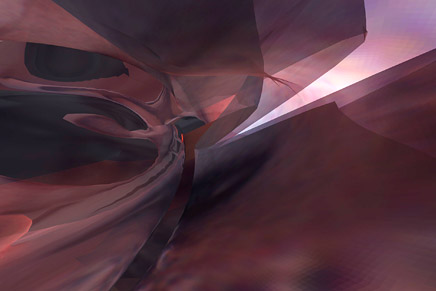
Rendering made by David while studying at the University of Texas School of Architecture.
At what point in your life did you decide to pursue architecture?
Tim: I’m not sure that I ever really made a decision to pursue it. My path was a little unusual. I went to a magnet high school that offered an architecture program. It was great compared to regular high school fare. I got to skip gym and spend three hours a day drawing, making models, etc. I sort of slipped into it. By the time I was graduating I couldn’t really imagine doing anything else.
Dave: I don’t remember exactly. Several teachers in High School steered me in that direction. The mix of art and science really appealed me.
Tim: Jacquie was the one destined for it…
Jacquie: As early as seven, I would sit alone in my room for hours drawing floor plans and facades of houses. Even then, I loved to visit different spaces and observe how layout, light, and materials were used. As I was preparing for college I always planned to study architecture. However, I didn’t start in the architecture program until my second year. I was super curious about journalism, advertising, government and philosophy. By the time I started design classes, I was ready to be completely immersed in it.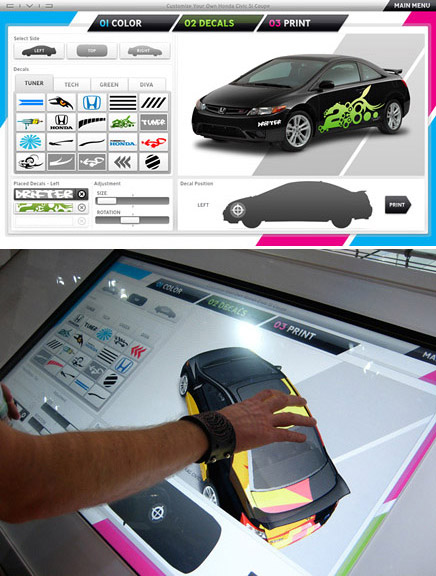
Honda Auto Show Kiosks
When did you decide to stop pursuing architecture? Why?
Dave: By the end of my fourth year of school I was pretty sure that I didn’t want to pursue a traditional architect’s career. I was discouraged by the sacrifices expected of young designers by the studios that were doing innovative work. I decided to build upon some of the more experimental digital and virtual projects I had been doing. My goal at the time was to explore the boundary between virtual spaces and physical ones. I’m still very interested in that that territory.
Tim: Yeah, similar to Dave, I struggled with the poverty and creative hurdles that I saw as a part of practicing architecture. By my fourth year I had also decided to do something else. I wasn’t sure what. I wanted to do something less constrained creatively, more financially rewarding, and more dynamic. That’s when Dave and I decided to start our first company, Circumstance. Jac took a different path but ended up in the same place…
Jacquie: When I graduated, I planned to work for a couple of years and return to grad school. That didn’t happen. Instead, I started working at Human Code in Austin, which at the time was a small interactive agency that created “edutainment” CD-ROMs for companies like Discovery Channel, National Geographic, Mattel, etc.. It was a great place – a multidisciplinary creative company with 3D animators, traditional artists, musicians, writers, programmers, and game designers collaborating on big year-long productions.
It was exciting to be early to a new industry. We were creating our own processes and roles, rather than inheriting long-held traditions.
Tim: I liked that, too. Everything was brand new. After only 2-3 years into this new industry we were veterans. We were inventing the craft and making things that were totally new. It was tough but super engaging.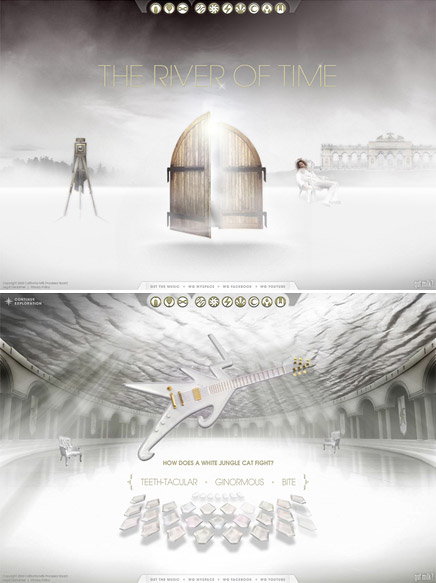
White Gold is White Gold
Describe your current profession.
Tim: The three of us run a company called Odopod in San Francisco. There are about 35 people at Odopod. We design all types of digital experiences. Some are useful products like mobile phone applications and others are more fanciful things like advertising websites. The majority of our work is for the web but we’ve also done a lot of work for interactive television and mobile devices. Right now we’re working for Nike Skateboarding, PlayStation, Seattle Children’s Hospital, and Zune.
Dave: We’ve organized the company around multidisciplinary teams. Each team is like its own small company that includes interaction designers, visual designers, animators, programmers, and producers.
Museum of Science and Industry
Jacquie: When we started out, we were all generalists. Over time we’ve specialized and have taken on different roles. Together, the three of us oversee different aspects of Odopod. I like to keep things organized. As Managing Partner, I oversee operations, finances, marketing and project management. I approach the business as its own design project.
Dave: I’m the Technical Director. I spend the majority of my time researching technologies and helping our teams take full advantage of them in our process.
Tim: And I’m the Creative Director. I work with the team leads to ensure that they are pushing themselves creatively while still attending to the clients’ problems. I spend most of my time providing an objective opinion about whether we’re realizing the project’s main concepts.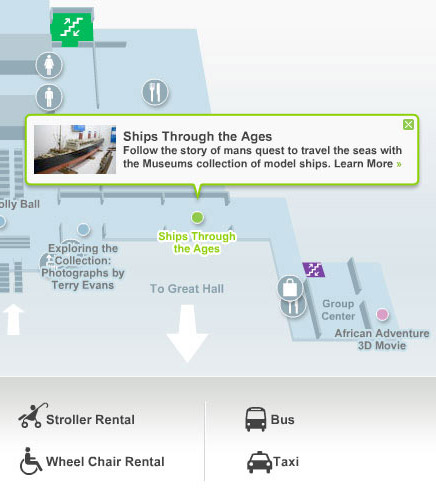
Museum of Science and Industry - User Experience Details
What skills did you gain from architecture school, or working in the architecture industry, that have contributed to your success in your current career?
Tim: I recommend Architecture School for everyone. Its rigorous, inventive, and involves making things. It also encourages travel and an overall awareness about the world. I loved it. That said, I don’t typically recommend pursuing a career in architecture.
I think what I got out of it was the ability to think conceptually and systemically. Interactive experiences are systems, sort of like buildings. They’re fairly complex in that they are experienced in unique and varied sequences by the people that come to them. I’m not sure where else you can learn to creatively solve problems like this.
Dave: Perhaps most importantly, architecture school provided me with a thoughtful design process. One that considers the importance of observation, time and context. I learned to think of a design as a series of unfolding events rather than a single moment. And that designs are impacted by their surroundings rather than existing as isolated objects. These are critical considerations not only for architects, but all designers.
I'm also extremely fortunate to have been shown how algorithms and programming can be incorporated into the design process. I learned that computers aren’t just tools for documentation. They can become a collaborative partner in idea creation. This approach had an immediate and profound impact on me and formed a lasting desire to use computers to extend the creative process in new and innovative ways.
Jacquie: I think that architectural design encourages self discipline and independence, and because it calls upon such a diverse set of skills, it provides a unique opportunity to discover your true talents. Even with the same educational background, Tim, Dave and I have applied it in ways that best suit our strengths and interests.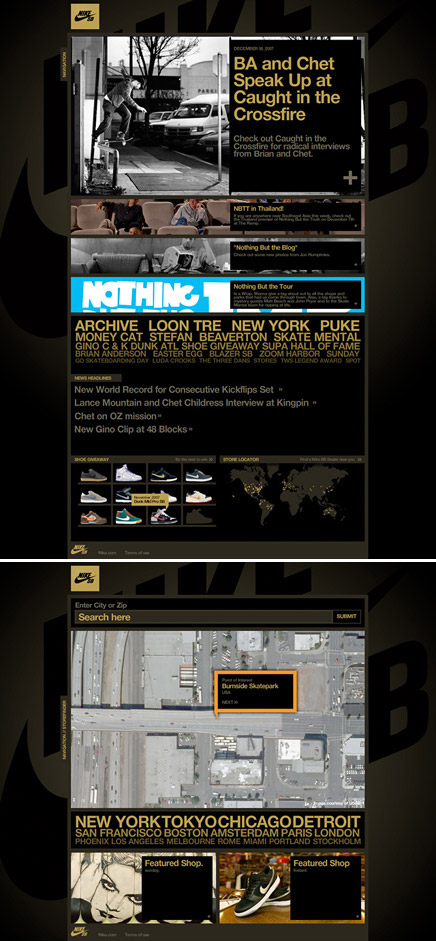
Nikeskateboarding.com
Do you have an interest in returning to architecture?
Jacquie: No, I feel like architecture belongs to those who are fully devoted to it. I’m a very respectful enthusiast.
Tim: I feel the same way. I would love to contribute creatively to a house for myself, but only in collaboration with an architect.
Dave: At the moment, I am not interested in designing buildings; however, I would enjoy more opportunities to work at that intersection of real and virtual spaces.
Creative Commons License
This work is licensed under a Creative Commons License .
/Creative Commons License
5 Comments
This was a wonderful article...i'm in a similar situation: finished an undergrad in architecture, but have still not felt the 'pull' to pursue a career in it...this article not only helped me feel less alone in the venture outside of "career-determined-by-degree" path, but to reflect on my skills arch school developed in me and move forward. congratulations on the success of your business and truly following your creative passions!
Jacquie, Dave, Tim,
hello from Michael Benedikt, still, as they say, going strong. Congrats on Odopod, which seems to be doing really great work. I will send this article on to Marcos.
Michael
Great article... I've always considered heading down the non-traditional path. I'm seriously getting back into programming (my original major in undergrad was computer science), and after 8 years in the profession I am starting to look at interaction design positions. It's good to hear that this kind of direction is possible with my degree and experience.
BARBER!
makes me so proud...
- js
I moved from architecture to Interaction design too. Working for method.com. The architecture mindset surely helps deal with the complexity of the information world. I don't find the transition tough atleast for now. I do miss designing physical spaces though. Creating something tangible has a totally different sense of achievement to it.
Shagun
Block this user
Are you sure you want to block this user and hide all related comments throughout the site?
Archinect
This is your first comment on Archinect. Your comment will be visible once approved.